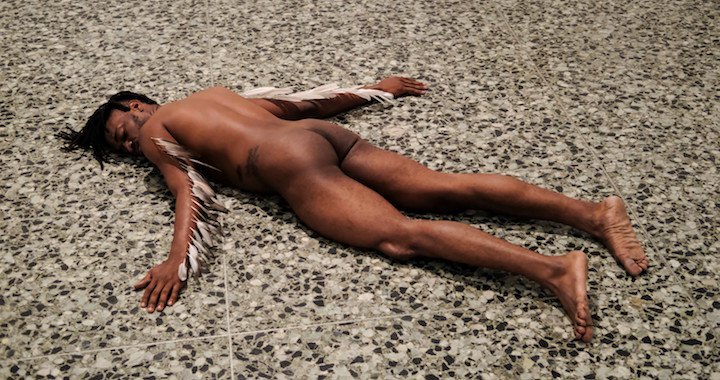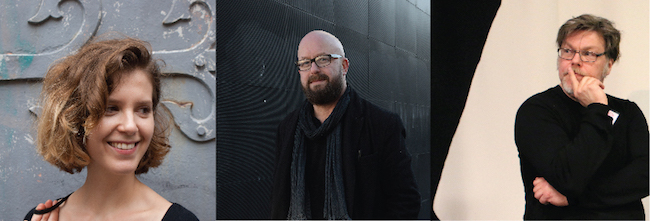
There is no ceiling unless you make one
Q&A with SUPERMARKET– Stockholm Independent Art Fair project team about the upcoming edition of SUPERMARKET 2018.
01/03/2018
From April 12 to 15 the annual independent art fair SUPERMARKET 2018 will be taking place in Stockholm. What makes it truly alternative is the stipulation that for galleries, art centres and other creative initiatives to participate, they must be exclusively artist-established and artist-run. The goal of SUPERMARKET is to provide a showcase for artist initiatives from all over the world and to create opportunities for new networks in the Swedish as well as international art scenes.
This independent art fair first arrived on the scene as a counter action to the commercial gallery art fair MARKET (which debuted in 2006), and was therefore given the name of MINIMARKET. By 2007 it had changed its name to SUPERMARKET, and presented 17 exhibitors from seven countries. Currently SUPERMARKET is the largest art fair in Sweden and the Nordic as a whole, with 74 exhibitors from 25 countries at last year’s edition. It has undeniably placed itself and Stockholm in the epicentre of the Nordic art scene, and has become a major player in the European art market.
Since 2011 SUPERMARKET has also been publishing an accompanying magazine, the theme of which (and of the fair as well) this year is ‘Legacy: Who Will Survive And What Will be Left of Them’.
On this year’s SUPERMARKET 2018, and whether there still is room for new art fairs in the world, we present the following short conversation with SUPERMARKET project team - Andreas Ribbung (Project Director), Pontus Raud (Project Director) and Alice Maselnikova (Project Manager).

Alice Maselnikova (Project Manager), Andreas Ribbung (Project Director), Pontus Raud (Project Director)
More than ten years have passed since you launched the first SUPERMARKET. During that time the global art scene has changed tremendously. Ironically, in some way it truly resembles a supermarket now. How has this affected, or perhaps not affected, the concept/identity of SUPERMARKET?
I guess that we noticed the implied commodity-nature of art already back in 2006, and to which the ironic name of our art fair directly refers. This state of the global art market was already there ten years ago, even if it still keeps proliferating today. We are constantly trying to avoid being misunderstood as being the opposite of who we are; we are always working to make clear what kind of art initiatives we stand for – the not-for-profit artist-run sector. However, it would be very naive to believe that the independent art scene stands untouched by the global market; it is not so idealistic, and we very much depend on cultural policies, for example.
SUPERMARKET is organised by artists and, as it says in its concept statement: ‘It is an art fair that strives to offer the visitor an experience rather than focusing on sales.’ How easy or difficult is it to keep this balance?
Our art fair is, by its very nature, quite different from commercial art fairs. The focus on networking and the exchange of knowledge between artists is important. Through the public programme of Talks & Performances and the printed art catalogue/magazine, we try to show our audience the different nature of contemporary art in its various forms. As for sales, there are both galleries who sell art and ones that absolutely do not; we categorically do not meddle in how they decide to present their artworks.
There are many discussions going on regarding the frightening uniformity of art being produced today, and the influence of social media and cellphone-friendly art on the practice of art. Do you sense this manifesting itself in SUPERMARKET? For example, have you felt the aftershock of the so-called ‘zombie formalism’?
Zombie formalism is not really a problem at SUPERMARKET, as the diversity of art initiatives that we present would be impossible to fit into a uniform style given the geographical but also conceptual range of invited galleries and artists. This type of homogeneous formalism is usually created as a market speculation (and seen in many other sectors besides just art) in order to increase artwork sales, but as mentioned earlier, this is not the primary aim of 'our' galleries.

Oree Holban, Nulobaz Gallery (Israel) 'Trapped in a Venus Body', plasticine on wood and plexiglass, 35x43cm, 2017, photo: Rami Tsalka
Is there a ‘ceiling’ in terms of the level of access to collectors and galleries for an art fair such as SUPERMARKET?
You know, there is no ceiling unless you make one. One of the assets of SUPERMARKET is the focus on both the art professionals and the general public. We have many collectors who we invite to SUPERMARKET every year, and we are happy to say that there are also new faces showing up every year. The aforementioned public and professional programmes create an opportunity for the artists to meet with other galleries and create sustainable collaborations, which we keep track of.
What is the price limit that a collector who goes to SUPERMARKET is psychologically ready to spend?
Prices are usually lower than at commercial art fairs, but it is very individual. There is just not so much focus on the buying and selling. Nevertheless, it seems like a predictable risk of an art collector's profession that, if they fall for an art piece, they should be psychologically ready to spend money on it.
Could you name some artists for whom SUPERMARKET was a crucial platform in the furthering of their careers?
It is hard to tell if SUPERMARKET itself is the reason why many talented artists became successful; most of all it is due to their talent and hard work...and some luck! Since there are so many spinoff effects, sometimes we even have difficulties following all the encounters and collaborations – which is great, nevertheless! Some notable artists that have shown at SUPERMARKET are, for example, Radenko Milak (BA), Agnelika Fojtuch (PL), Zoro Fiegl (NL), R.E.P. (UA), Britta Marakatt-Labba (SE), Jakub Nepras (CZ) and many more.

Zierle&Carter, Istanbul Performance Art (Turkey) ’Under Cover’, Canada, documentation of performance, 2011, photo: Dayna Danger
What would you say to those who complain that there are too many art fairs in the world right now? And do you think there still is room for a new one?
Most of the art fairs are horrible... Not even the free champagne makes them worth attending. Haha, no, but seriously, the critique is understandable. A large number of art fairs are solely marketed events aimed at art collectors and their money, and the art can somewhat lag behind... That's not good. But art fairs that promote young artists, that do not seek only financial profit but actually have an ideal that they defend – there will always be room for ones like that, no matter how difficult it may be to establish them.
How do you see the future of SUPERMARKET in the next five/ten years?
We will still be going on if, perhaps, in a different venue or in a slightly altered format. Maybe even in a new city? Who knows?
What will be some of the highlights of SUPERMARKET 2018?
This year we are very happy to have three Russian spaces participating: Elektrozavod from Moscow, Dom Gruzchika from Perm, and Gallery ch.9 from Murmansk. There is a strong focus on Central European initiatives: Czech Republic, Hungary, Poland, Slovakia and also Austria or Switzerland; we have the newly participating SAW Gallery from Ottawa, and a new collaboration between galleries in Cape Town and Johannesburg – Alma Martha and Kalashnikovv, respectively.